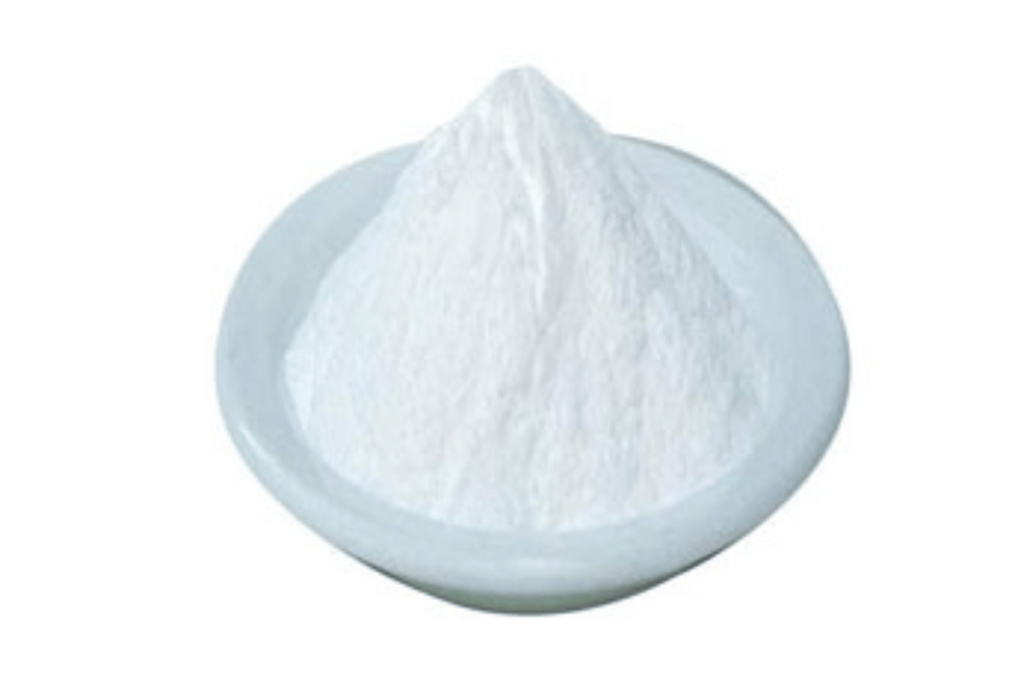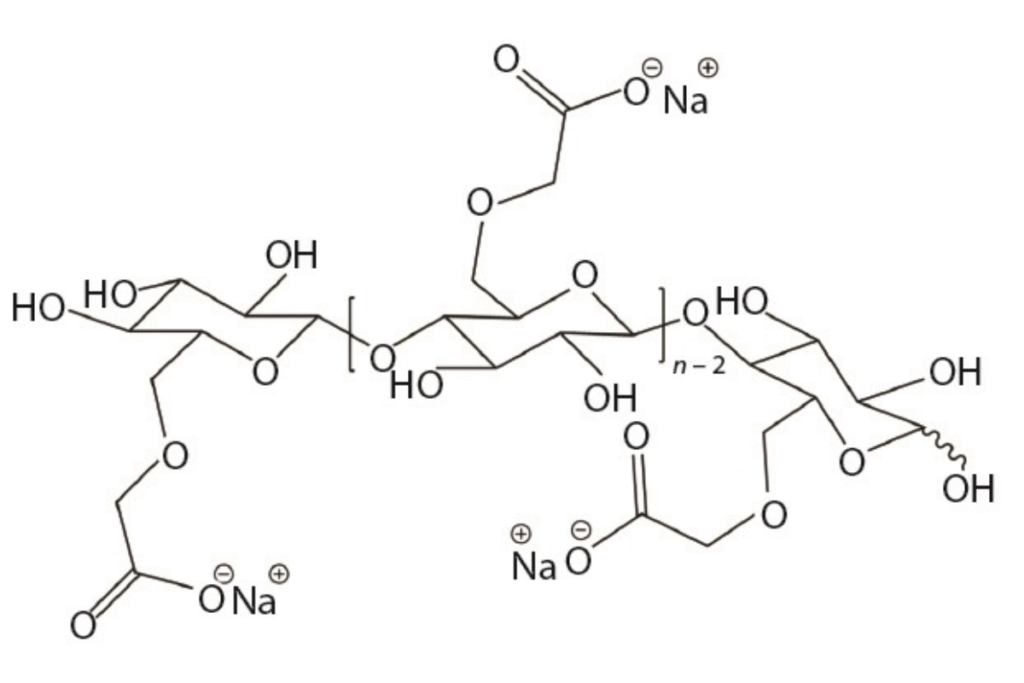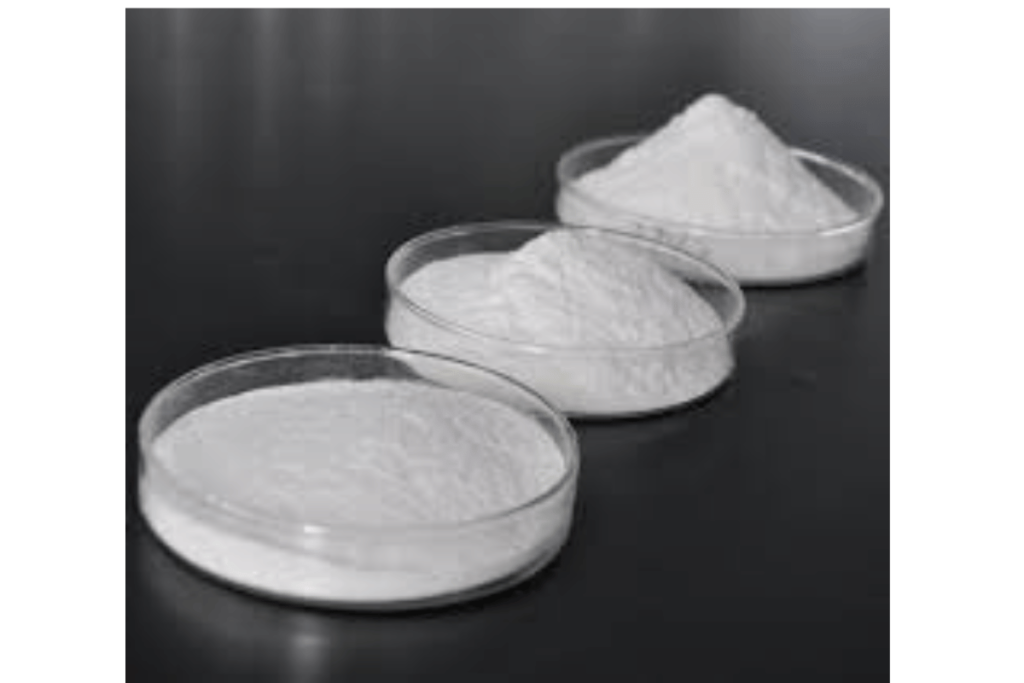The world of cosmetics is ever-evolving, constantly adapting to new scientific discoveries and consumer demands. A significant aspect of this evolution is the choice of thickeners, crucial components that significantly affect the texture, stability, and application of cosmetic products. Historically, thickeners have ranged from natural gums to synthetic polymers, each bringing unique properties to cosmetic formulations.
In this landscape of innovation and diversity, carboxymethyl cellulose sodium (CMC sodium) emerges as a standout ingredient. Recognized for its exceptional thickening properties, CMC sodium has become a key player in modern cosmetic formulations. This polysaccharide, derived from cellulose, is not just a thickening agent but a multifunctional ingredient enhancing the performance and feel of cosmetic products.
Understanding the role and impact of thickeners like CMC sodium in cosmetics is vital for both manufacturers and consumers. It’s a bridge between the chemical complexities of cosmetic science and the practical aspects of product application and skin interaction. The incorporation of CMC sodium into a wide array of cosmetics underscores its importance in delivering products that not only meet but exceed user expectations in terms of quality, efficacy, and sensory experience.
As we delve deeper into the world of carboxymethyl cellulose and its sodium salt variant, we’ll explore its chemistry, applications, and why it stands out among other thickeners in the cosmetic industry. This journey through the intricacies of CMC sodium will shed light on its essential role in cosmetic science and product development.

Spotlight on Carboxymethyl Cellulose Sodium: A Key Cosmetic Ingredient
Carboxymethyl Cellulose Sodium (CMC sodium), a derivative of cellulose, has garnered acclaim in the cosmetic industry for its unique properties and versatility. This water-soluble polymer, obtained by chemically modifying cellulose, transforms into a gel-like substance when dissolved, making it a preferred thickener in various cosmetic formulations.
At its core, CMC sodium is a compound that brings together the natural base of cellulose with the functional efficiency of a synthetic additive. This amalgamation results in an ingredient that offers unparalleled benefits in cosmetic applications. Understanding its composition and role in cosmetics is key to appreciating the technological advancements in product formulation.
CMC sodium’s suitability for cosmetic use stems from its unique characteristics. It is known for its high viscosity, which is instrumental in creating the desired texture in products like lotions, creams, and hair care items. Furthermore, CMC sodium boasts excellent stability, ensuring that the consistency of the cosmetic products remains unchanged over time and under varying environmental conditions.
One of the most significant aspects of CMC sodium is its compatibility with the skin. Unlike some synthetic thickeners that may cause irritation or adverse reactions, CMC sodium is generally well-tolerated, making it suitable for products intended for sensitive skin. This compatibility is a crucial factor in its widespread adoption by cosmetic formulators.
The eco-friendly nature of CMC sodium also deserves mention. As consumers become more environmentally conscious, the demand for sustainable and biodegradable ingredients in cosmetics has risen. CMC sodium, being plant-based, aligns with these green cosmetics trends, further cementing its position as a thickener of choice.
In summary, the role of CMC sodium in cosmetics goes beyond mere thickening. It contributes to the stability, texture, and user experience of cosmetic products, all while being skin-friendly and environmentally conscious. As we continue to explore its applications and advantages, it becomes evident why CMC sodium is a valuable asset in the cosmetic industry’s ingredient arsenal.
Why Carboxymethyl Cellulose Sodium Stands Out
Subsection 1: Chemical Composition and Properties
Carboxymethyl cellulose sodium (CMC sodium) stands out in the cosmetic industry due to its unique chemical structure. It is a cellulose derivative where the cellulose backbone is modified by introducing carboxymethyl groups, making it soluble in water. This modification imparts CMC sodium with distinctive properties such as high viscosity, excellent moisture retention, and the ability to form stable gels. These properties make it ideal for enhancing the texture and sensory feel of cosmetic products.
Subsection 2: Application in Cosmetic Products
The versatility of CMC sodium allows for its widespread use in a variety of cosmetic products. It acts as a thickener in creams and lotions, providing a smooth and luxurious feel. In shampoos and hair conditioners, it helps in achieving the desired consistency while providing moisture retention benefits. CMC sodium is also used in toothpastes for its thickening and stabilizing properties, ensuring the product maintains its form and efficacy.
Subsection 3: Comparing Carboxymethyl Cellulose Sodium with Other Thickeners
When compared to other thickeners like xanthan gum or guar gum, CMC sodium offers distinct advantages. Its ability to create clear gels is particularly valued in the production of transparent cosmetic products. Additionally, CMC sodium provides a more consistent viscosity across a wide range of pH levels, making it more versatile for different types of cosmetic formulations. It is also generally less reactive with other ingredients, reducing the risk of unwanted interactions in complex formulations.
In conclusion, the standout qualities of CMC sodium—from its unique chemical composition to its broad application spectrum in cosmetics—underscore its importance as a thickener. It provides formulators with an ingredient that not only enhances the performance of cosmetic products but also elevates the user experience, marking it as a preferred choice in the industry.

The Advantages of Carboxymethyl Cellulose Sodium in Cosmetics
Carboxymethyl Cellulose Sodium (CMC Sodium), a gem in the realm of cosmetic thickeners, offers a multitude of advantages that make it a favorable choice in the industry.
Enhancing Texture and Consistency
One of the most significant benefits of CMC sodium is its ability to enhance the texture and consistency of cosmetic products. Its high viscosity and gel-forming capabilities allow for smooth, stable formulations, providing a luxurious and appealing tactile experience. This feature is particularly beneficial in products like face creams, body lotions, and hair conditioners, where consistency and spreadability are key to consumer satisfaction.
Skin Compatibility and Safety
CMC sodium is known for its compatibility with various skin types, including sensitive skin. Its gentle nature minimizes the risk of skin irritation, making it an ideal ingredient in hypoallergenic cosmetic products. Moreover, CMC sodium is non-toxic and safe for long-term use, adhering to the stringent safety standards of the cosmetic industry.
Stability in Diverse Formulations
Another advantage of CMC sodium lies in its stability across different formulations. It maintains its properties under various conditions, such as changes in pH, temperature, and humidity. This stability is crucial for ensuring the longevity and effectiveness of cosmetic products, particularly those exposed to varying environmental factors.
Versatility Across Product Ranges
The versatility of CMC sodium extends across a wide range of cosmetic products. Whether in liquid or cream form, it serves as an effective thickener and stabilizer. Its ability to mix well with other ingredients without causing precipitation or separation is particularly valued in complex formulations.
Eco-Friendly and Sustainable
Aligned with the growing trend towards eco-friendly cosmetics, CMC sodium is derived from natural cellulose, a renewable resource. Its biodegradable nature makes it an environmentally responsible choice, catering to the increasing demand for sustainable cosmetic ingredients.
In summary, the advantages of CMC sodium in cosmetics are manifold. From improving the sensory qualities of products to ensuring safety and stability, CMC sodium plays a pivotal role in enhancing the overall quality and appeal of cosmetic formulations. Its alignment with both consumer preferences and environmental sustainability further solidifies its position as a preferred choice in the cosmetic thickener market.

Consumer Considerations: Choosing the Right Thickeners
When selecting cosmetic products containing carboxymethyl cellulose sodium (CMC sodium) as a thickener, consumers should consider several factors to ensure they are making informed choices.
Understanding Label Information
Consumers should familiarize themselves with ingredient labels on cosmetic products. Knowledge about CMC sodium and its derivatives helps in identifying products that use this thickener. This understanding is crucial for those with specific skin types or allergies.
Evaluating Skin Compatibility
Given its gentle nature, CMC sodium is generally suitable for all skin types, including sensitive skin. However, consumers should consider any personal skin sensitivities or allergies and choose products accordingly. Patch testing a small amount of the product for any adverse reactions is always recommended.
Considering Product Type and Purpose
The choice of a cosmetic product with CMC sodium should align with its intended use. For instance, CMC sodium is excellent in moisturizers and lotions for its hydrating properties, making it a suitable choice for dry skin. Similarly, its presence in hair care products can enhance texture and manageability.
Misconceptions and Myths
There are often misconceptions about the safety and effects of synthetic thickeners. CMC sodium, although synthetically modified, is generally safe and effective. Consumers should rely on credible scientific information and avoid baseless myths surrounding cosmetic ingredients.
Seeking Professional Advice
For those with specific skin conditions or uncertainties about cosmetic ingredients, consulting a dermatologist or a skincare professional can provide personalized advice and recommendations.
In conclusion, when choosing cosmetic products with CMC sodium, consumers should be guided by accurate information, personal skin needs, and the specific benefits they seek from their cosmetic products. An informed approach ensures a satisfying and safe experience with cosmetics containing CMC sodium as a thickener.
The exploration of Carboxymethyl Cellulose Sodium (CMC Sodium) as a cosmetic thickener reveals its significant role in the industry. We have delved into its chemical composition, understanding how its unique properties make it an exemplary ingredient in various cosmetic products. From creams and lotions to shampoos and toothpastes, CMC sodium enhances texture, consistency, and user experience.
Comparisons with other thickeners highlight CMC sodium’s superior performance in terms of stability, skin compatibility, and versatility. Its ability to maintain consistency across different pH levels and environmental conditions sets it apart. Moreover, its compatibility with different skin types, including sensitive skin, makes it a safe choice for a wide range of consumers.
In terms of environmental impact, CMC sodium’s plant-based origin and biodegradability align with the growing trend of sustainable and eco-friendly cosmetics. This aspect not only caters to the current market demand but also contributes to a more sustainable future in cosmetic manufacturing.
The advantages of CMC sodium extend beyond its functional benefits. It represents the intersection of science, safety, and sustainability in cosmetic formulation. Consumers seeking products with CMC sodium can be assured of its efficacy and safety, backed by scientific research and industry standards.
In summary, Carboxymethyl Cellulose Sodium stands as a preferred choice for cosmetic thickeners, balancing functionality, safety, and environmental consciousness. Its continued use in the cosmetic industry is a testament to its unparalleled benefits and alignment with both consumer needs and industry trends.





